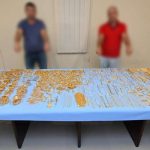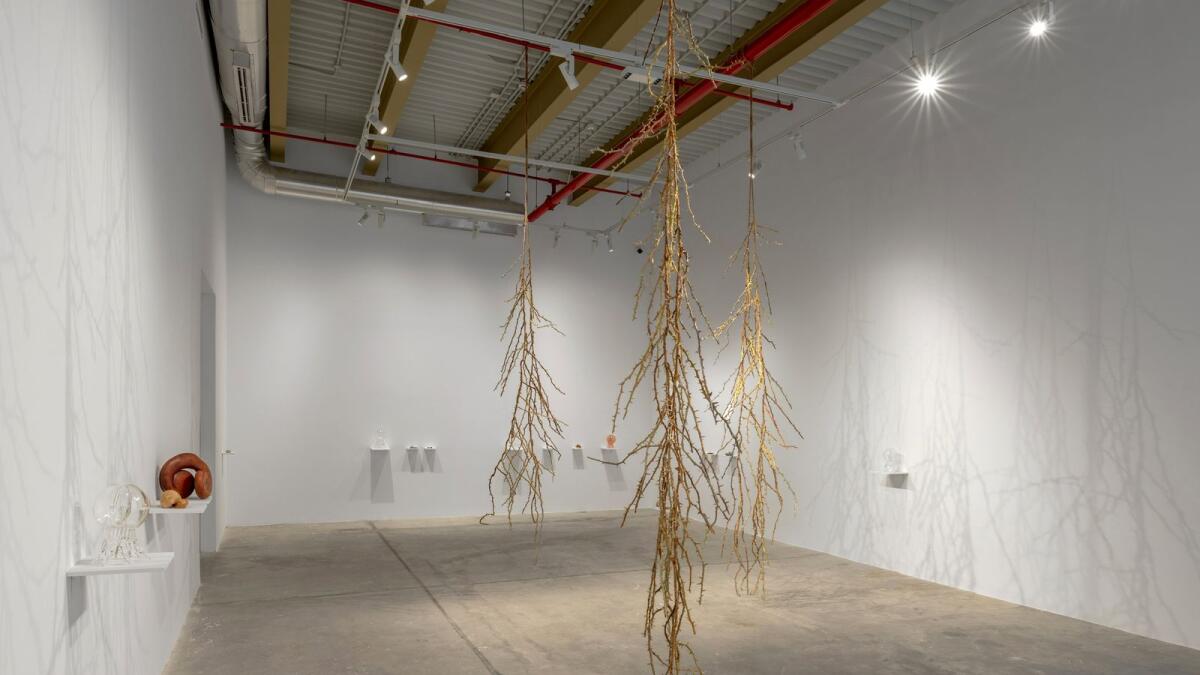London-based artist Nika Neelova’s solo exhibition, Beghost, showcases sculptures made from materials such as glass, clay, and fossilized shark teeth. The artworks offer a speculative perspective on the ancient marine life that once thrived in the Buhais Geology Park and Jebel Buhais archaeological site in Sharjah. Neelova’s sculptures symbolize the transformation and decay of matter on Earth, blending elements of chemistry, alchemy, and geology. The artist’s exploration of the geological history of the Sharjah region reflects on natural processes like rock erosion and clay petrification.
Neelova’s artistic inspiration is driven by a desire to reveal the hidden side of objects and connect narratives across different time periods. She aims to generate language and create a system of knowledge through her art, blurring the lines between fiction and reality. The sculptural practice of Neelova explores the intersection of ancient and modern worlds, influenced by the history of the region and the archaeological findings that have shaped her artwork.
The Beghost project was inspired by a visit to the Buhais Geological Centre, where Neelova imagined the prehistoric sea that once covered the region now transformed into a desert. The artist visualized the dunes haunted by the memory of water and their watery ancestors, reflecting on the geological changes that occurred over millions of years. The sculptures in Beghost explore the ancient marine life of Buhais Geology Park and Jebel Buhais, creating a dialogue between Neelova’s works and the fossils from archaeologist Nirmal Rajah’s collection.
Neelova’s art delves into the themes of transformation and decay, exploring the cycle of material exchanges and the process of deconstruction and creation. The sculptures in Beghost represent the conversion of existing objects into other mediums, altering their internal structures and liberating them from their original meanings. Through her work, Neelova aims to evoke the eternal cycles of destruction and rebirth, challenging viewers to contemplate the boundaries between human and non-human, organic and inorganic.
Working with materials like glass, clay, and fossilized shark teeth presents challenges that Neelova embraces in her artistic practice. She pushes the materials to their limits, exploring the fragility and instability of the process to capture the essence of transformation. Repurposed and reclaimed objects are transformed into new configurations, estranged from their identities and released from historical constraints. Neelova’s sculptures blur the lines between past and present, ancient and modern worlds, inviting viewers to explore the interconnectedness of matter in the universe.
The relationship between the ancient and modern worlds in Neelova’s sculptures is depicted as a non-linear cycle, where past and present intersect, flowing into each other. Through her exhibitions, the artist creates a ‘temporal knot’ that abolishes chronological linearity, challenging traditional concepts of time. The environment and history of the region influence Neelova’s work, inspiring her to create site-specific sculptures that explore cultural and historical lineages. By addressing universal narratives beyond geography and periodization, Neelova’s abstract sculpture delves into the interconnectedness of matter in the universe as a collective memory and background.









